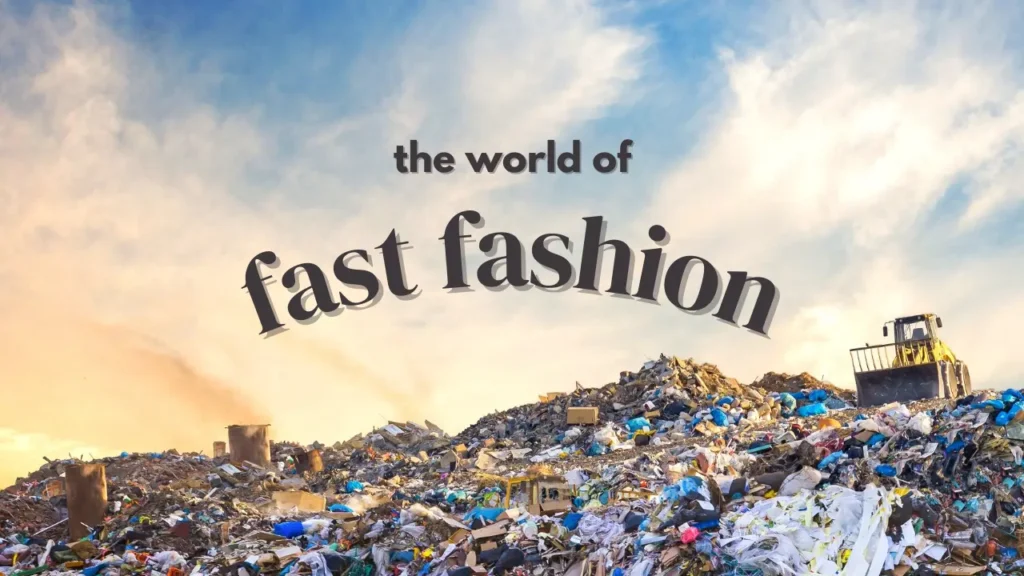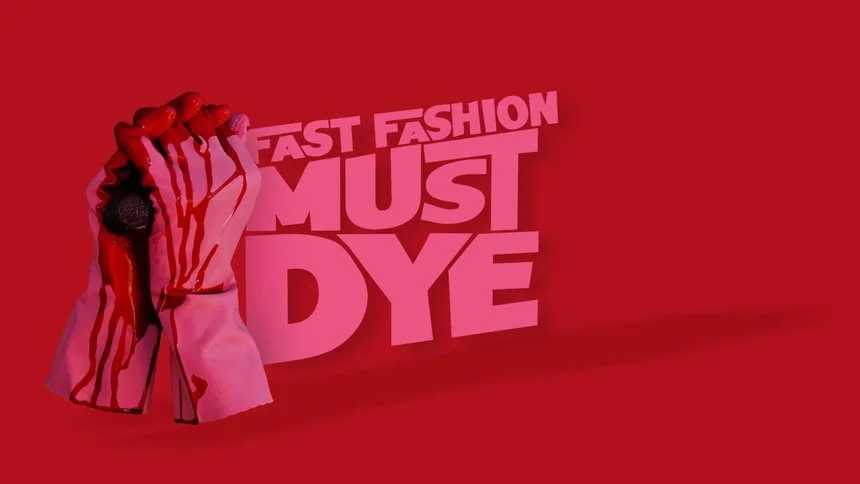
The fashion industry, focused on quickly making and selling cheap clothes, has seen a huge rise in “fast fashion” in recent years. The term refers to brands that produce vast quantities of cheap, trendy clothing that consumers wear briefly before discarding. However, behind this affordable apparel lies a disturbing reality: poor-quality clothing, produced with devastating environmental, social, and economic consequences. This article explores the hidden truth of fast fashion’s low quality, from its environmental footprint to unethical labor practices and the psychological traps that keep consumers coming back.
What is Fast Fashion?
Fast fashion means clothing brands quickly create new styles and sell them cheaply to consumers. These brands, like Zara, H&M, and Shein, produce clothing quickly, using cheap materials and labor, to keep up with constantly changing trends. As a result, consumers are encouraged to buy more, wear briefly, and discard them just as quickly.
Fast fashion has made it possible for lots of people to buy stylish clothes cheaply. However, the desire for fast, cheap fashion has led to significant sacrifices in quality, environmental sustainability, and worker welfare.
Environmental Costs of Fast Fashion
Fast fashion’s environmental footprint is staggering. The industry is responsible for significant greenhouse gas emissions, water pollution, and deforestation.
Greenhouse Gas Emissions
Fast fashion causes 2-8% of the world’s carbon emissions, more than all international flights and shipping put together. This is primarily due to the rapid turnover of clothing, mass production, and the transportation required to distribute these products globally.
Water Pollution and Microplastics
The production of synthetic fibers, like polyester, releases harmful chemicals into water systems, contributing to the fashion industry being responsible for 20% of global wastewater. Additionally, 35% of all microplastics found in oceans come from the laundering of synthetic textiles, which are common in fast fashion clothing .These fibers do not degrade, meaning they accumulate and damage marine life.
Deforestation
The demand for cheap, fast fashion also drives deforestation. Every year, approximately 150 million trees are cut down to produce fabrics like rayon and viscose.This deforestation not only harms ecosystems but also contributes to climate change by reducing the planet’s ability to absorb CO2.
Labor and Ethics in Fast Fashion
In addition to its environmental toll, fast fashion is notorious for its unethical labor practices. The pressure to keep prices low leads companies to exploit workers, particularly in developing countries where labor laws are weak or non-existent.
Unsafe Working Conditions
Workers in fast fashion factories are often subject to extremely unsafe conditions. Factories in countries like Bangladesh, India, and China are notorious for paying workers as little as $3.43 a day, well below a living wage.Furthermore, many fast fashion factories Been involved in big disasters, like the Rana Plaza factory collapse in 2013, which killed more than 1,100 workers. Despite these tragedies, many fast fashion companies continue to cut costs at the expense of worker safety.
Child Labor
The fast fashion industry often depends a lot on children working. In many countries where fast fashion brands outsource their production, children as young as 10 work in factories, often in dangerous and unhealthy conditions. The low wages and lack of regulation make it easy for companies to exploit child labor without repercussions.
Ethical Comparison
In contrast, higher-quality, sustainable brands prioritize ethical practices, including paying workers fair wages, ensuring safe working conditions, and using environmentally friendly materials. These brands may come with a higher price tag, but the improved quality and ethical standards make them a more responsible choice for consumers.

The Disposable Nature of Fast Fashion
The inherent low quality of fast fashion clothing is a key reason why it is so unsustainable. These clothes are designed to be worn for a short time before they fall apart or go out of style, prompting consumers to buy more. This “wear once and throw away” mentality has led to an alarming amount of textile waste.
Cheap Prices, Lower Value
Fast fashion clothing is priced to be accessible to the masses, but this comes at a cost. The low price is often indicative of the low-quality materials and construction. Consumers have become conditioned to accept poor quality in exchange for affordability, leading to a cycle of consumption where clothes are bought, worn briefly, and discarded.
A personal anecdote from a shopper, for example, describes purchasing a cheap fast fashion item that began falling apart after just a few wears. The seams unraveled, and the fabric faded quickly, demonstrating the poor durability of these clothes.
Consumer Psychology: Why We Keep Buying
Even though fast fashion is low quality and bad for the environment, it keeps doing well. This is largely due to psychological factors that fast fashion brands exploit.
FOMO (Fear of Missing Out) and Addiction
Fast fashion plays on the fear of missing out, with brands releasing new collections weekly or even daily. Social media and influencer culture amplify this by constantly showcasing new trends. This creates a sense of urgency in consumers, driving them to make impulsive purchases to stay current.
Fast fashion also triggers the brain’s feel-good system. Studies have shown that purchasing cheap fashion triggers the brain’s pleasure centers, similar to the effect of drug addiction.This cycle of dopamine hits makes it hard for consumers to break away from the fast fashion habit.

The Cost of Convenience
Fast fashion’s success also lies in its convenience. Online shopping platforms and low prices make it easy for consumers to buy clothes without considering the long-term cost to the environment or workers. The convenience of fast fashion encourages consumers to value quantity over quality, leading to an endless cycle of consumption.
The Future of Fast Fashion: Can We Break the Cycle?
Despite the harm caused by fast fashion, the industry continues to grow. In 2022, the global fast fashion market reached an estimated value of $99.23 billion, demonstrating that consumer demand for cheap, trendy clothing remains strong.However, there is a growing movement towards more sustainable and ethical fashion, driven by consumer awareness and demand for transparency.
The Rise of Sustainable Fashion
Sustainable fashion brands are emerging as a viable alternative to fast fashion. These companies focus on producing high-quality clothing made from environmentally friendly materials, often using ethical labor practices. While these clothes come at a higher cost, they are designed to last longer, reducing the need for frequent replacements.
Consumers are also becoming more conscious of the environmental and social impacts of their clothing choices. Many are opting to buy fewer, higher-quality items that can be worn for years, rather than participating in the fast fashion cycle.
Long-Term Cost Savings
Investing in high-quality, sustainable clothing can save consumers money in the long run. While fast fashion may seem cheaper upfront, the low quality means that clothes need to be replaced frequently. In contrast, well-made garments are designed to last, providing better value over time.
Conclusion: Choosing Quality Over Quantity
Fast fashion may offer the allure of trendy, affordable clothing, but its poor quality and devastating environmental and ethical impacts make it an unsustainable choice. Consumers can break free from the fast fashion cycle by choosing to invest in higher-quality, sustainable clothing. By buying less, choosing well, and wearing longer, we can reduce the demand for fast fashion and its harmful consequences.
It’s time to prioritize quality over quantity, both for the sake of the planet and for the people who make our clothes. The future of fashion lies in sustainability, and it starts with our choices as consumers.
FAQs
- What is fast fashion?
Fast fashion refers to the rapid production of trendy clothing at low prices, often at the expense of quality, environmental sustainability, and ethical labor practices. - Why is fast fashion bad for the environment?
Fast fashion contributes to significant carbon emissions, water pollution, microplastic waste, and deforestation. It also promotes a “throwaway” culture that leads to excessive textile waste. - How does fast fashion affect workers?
Workers in fast fashion factories often face unsafe conditions, low wages, and exploitation, including child labor. Many factories lack basic safety standards, resulting in tragedies like factory collapses. - Can fast fashion be sustainable?
While some fast fashion brands claim to be implementing sustainable practices, the industry’s focus on cheap, disposable clothing makes true sustainability challenging. Opting for higher-quality, long-lasting clothing is a more sustainable choice. - What are the alternatives to fast fashion?
Consumers can choose sustainable fashion brands that prioritize ethical labor practices and environmentally friendly materials. Thrifting, upcycling, and buying fewer but better-quality items are also alternatives to fast fashion.







